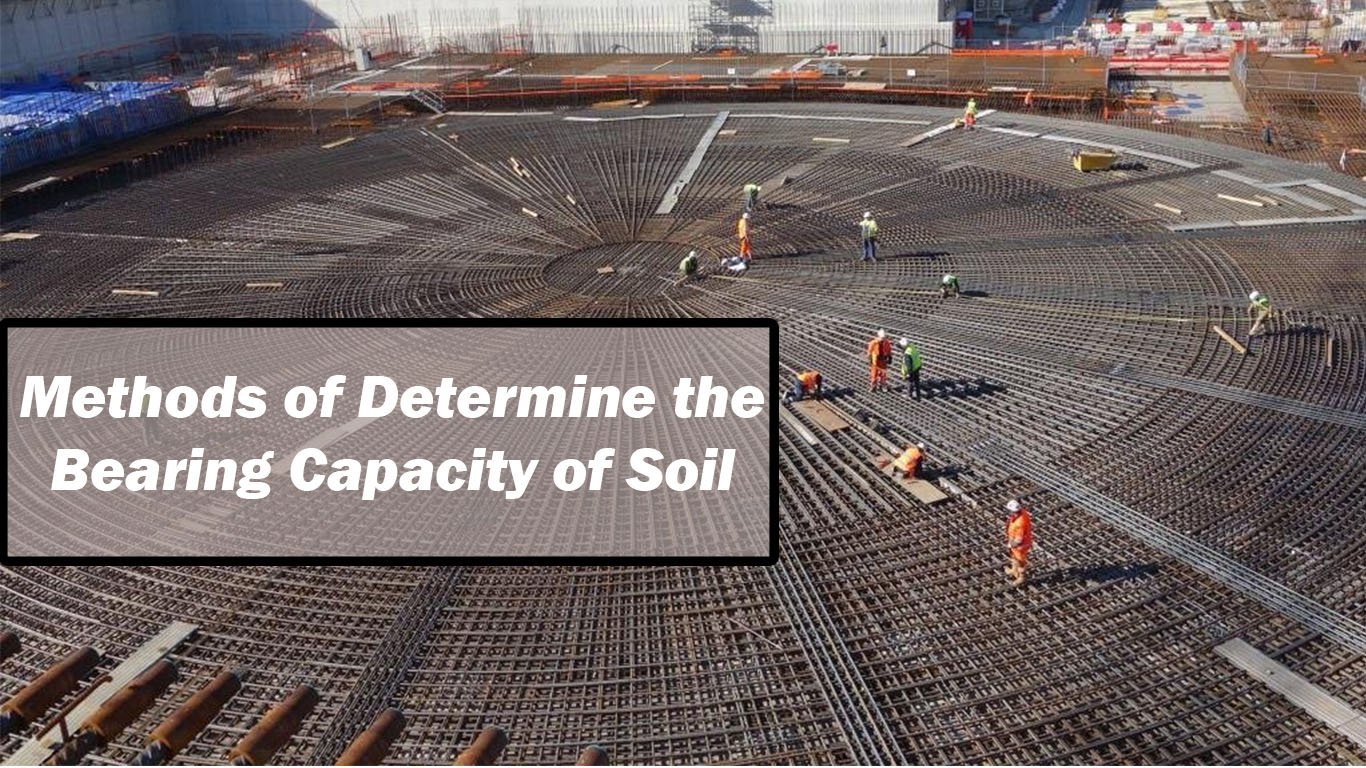Methods of Determine the Bearing Capacity of Soil
Bearing capacityof soil : The ability of the foundation material, weather soil or rock to carry loads safely.The bearing capacity of soil is determined by any one of the following methods
(i) Method of loading
(ii) Method of dropping a weight
Method of loading
Procedure to carry out the test:
1. A square pit of required size is excavated upto 5 times the side of steel plate to be used. At the centre of pit, square hole is dig, which is same ratio to that of breadth to depth of pit.
2. The bottom of the hole is made level
3. The steel plate is put up in the hole and then platform is prepared
4. The amount of initial load is decided according to the type of the soil to be tested
5. A level is planted to note the setting of steel plate w.r.to the permanent benchmark.
6. The load is to be kept on platform till the settlement of the ground ceases or stops
7. The load is increased by a suitable amount, usually 0.5 tonnes and the procedure is continued
8. The recording of results is carried out in the following proforma.
9. The settlement of the ground will be fairly is proportion to the load upto a certain limit, when the bearing power of soil exceeded, the settlement will be out of the proportion.
10. The bearing capacity and safe bearing capacity of soil are calculated by using the following
Note:
1) This method can also be used for confirming the known bearing power of a soil
2) The loading should applied without shock
3) Dial gauges or deflect meters to record the settlement instead of level & staff for the accuracy upto 0.02mm
4) The zero corrections should be deducted from the observed settlement to get actual settlements zero correction is the settlement due to adjustment of soil particles under the action of loading.
5) The bearing capacity of sandy soil and gravelly soil is affected to the extent of 50% by presence of water table. Water should be pumped out before placing the steel plate.
6) The results obtained by this method are fairly accurate and reliable.
See More Advantages of Soil Compaction
Book to read Building Design and Construction Handbook
Method of dropping a weight:
In this method, a substance of known weight is dropped from a known height. The depth of impression made by the weight on the soil is noted. Then the bearing capacity of the soil is worked out as follows.
Ultimate resistance of soil
where R – Resistance of soil
A – cross section area of the substance
h – Height
w – weight of substance
∴ Safe bearing capacity of soil per unit are = R/A x f
Where f – factor of safety
The results obtained by this method are approximate and hence,this method is used for minor engineering structures or at places where first method would be impractible.
Types of soils – Bearing Capacity: Ultimately the load of the structure is coming on the soil and hence, it is of utmost importance to know the strength and behavior of the soil. The term bearing power or bearing capacity of soil is used to indicate the maximum load per unit area, which the soils resist safely without displacement. Dividing the ultimate bearing capacity of a soil by a factor of safety, the safe bearing capacity of a soil is obtained.Max. safe bearing capacity of different types of soils are given below
